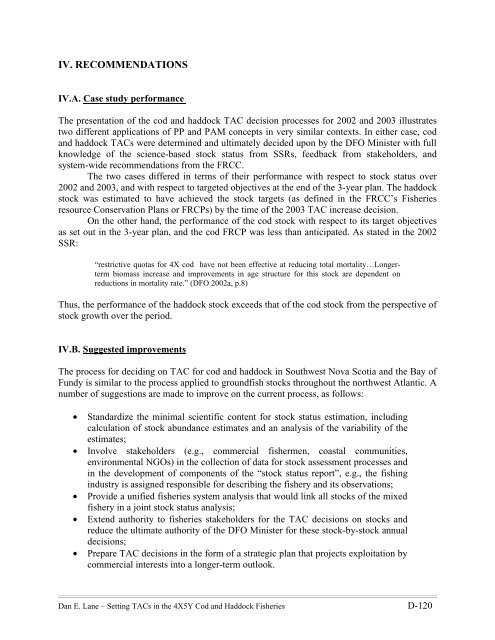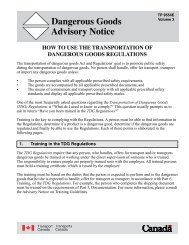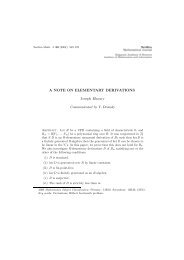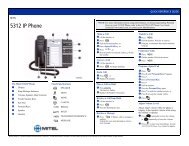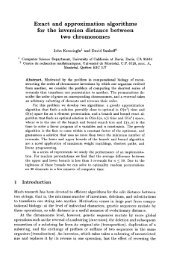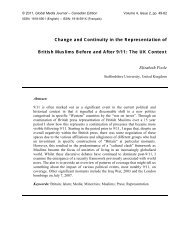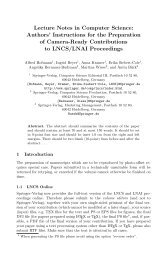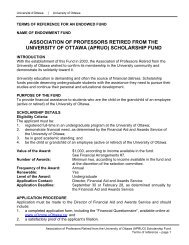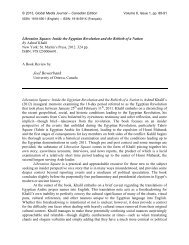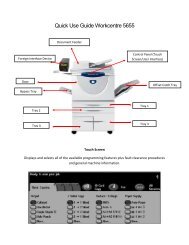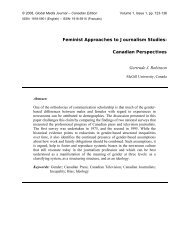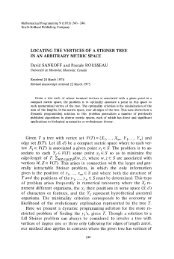PRACTICING PRECAUTION and ADAPTIVE MANAGEMENT ...
PRACTICING PRECAUTION and ADAPTIVE MANAGEMENT ...
PRACTICING PRECAUTION and ADAPTIVE MANAGEMENT ...
- No tags were found...
Create successful ePaper yourself
Turn your PDF publications into a flip-book with our unique Google optimized e-Paper software.
IV. RECOMMENDATIONSIV.A. Case study performanceThe presentation of the cod <strong>and</strong> haddock TAC decision processes for 2002 <strong>and</strong> 2003 illustratestwo different applications of PP <strong>and</strong> PAM concepts in very similar contexts. In either case, cod<strong>and</strong> haddock TACs were determined <strong>and</strong> ultimately decided upon by the DFO Minister with fullknowledge of the science-based stock status from SSRs, feedback from stakeholders, <strong>and</strong>system-wide recommendations from the FRCC.The two cases differed in terms of their performance with respect to stock status over2002 <strong>and</strong> 2003, <strong>and</strong> with respect to targeted objectives at the end of the 3-year plan. The haddockstock was estimated to have achieved the stock targets (as defined in the FRCC’s Fisheriesresource Conservation Plans or FRCPs) by the time of the 2003 TAC increase decision.On the other h<strong>and</strong>, the performance of the cod stock with respect to its target objectivesas set out in the 3-year plan, <strong>and</strong> the cod FRCP was less than anticipated. As stated in the 2002SSR:“restrictive quotas for 4X cod have not been effective at reducing total mortality…Longertermbiomass increase <strong>and</strong> improvements in age structure for this stock are dependent onreductions in mortality rate.” (DFO 2002a, p.8)Thus, the performance of the haddock stock exceeds that of the cod stock from the perspective ofstock growth over the period.IV.B. Suggested improvementsThe process for deciding on TAC for cod <strong>and</strong> haddock in Southwest Nova Scotia <strong>and</strong> the Bay ofFundy is similar to the process applied to groundfish stocks throughout the northwest Atlantic. Anumber of suggestions are made to improve on the current process, as follows:• St<strong>and</strong>ardize the minimal scientific content for stock status estimation, includingcalculation of stock abundance estimates <strong>and</strong> an analysis of the variability of theestimates;• Involve stakeholders (e.g., commercial fishermen, coastal communities,environmental NGOs) in the collection of data for stock assessment processes <strong>and</strong>in the development of components of the “stock status report”, e.g., the fishingindustry is assigned responsible for describing the fishery <strong>and</strong> its observations;• Provide a unified fisheries system analysis that would link all stocks of the mixedfishery in a joint stock status analysis;• Extend authority to fisheries stakeholders for the TAC decisions on stocks <strong>and</strong>reduce the ultimate authority of the DFO Minister for these stock-by-stock annualdecisions;• Prepare TAC decisions in the form of a strategic plan that projects exploitation bycommercial interests into a longer-term outlook.Dan E. Lane – Setting TACs in the 4X5Y Cod <strong>and</strong> Haddock Fisheries D-120


